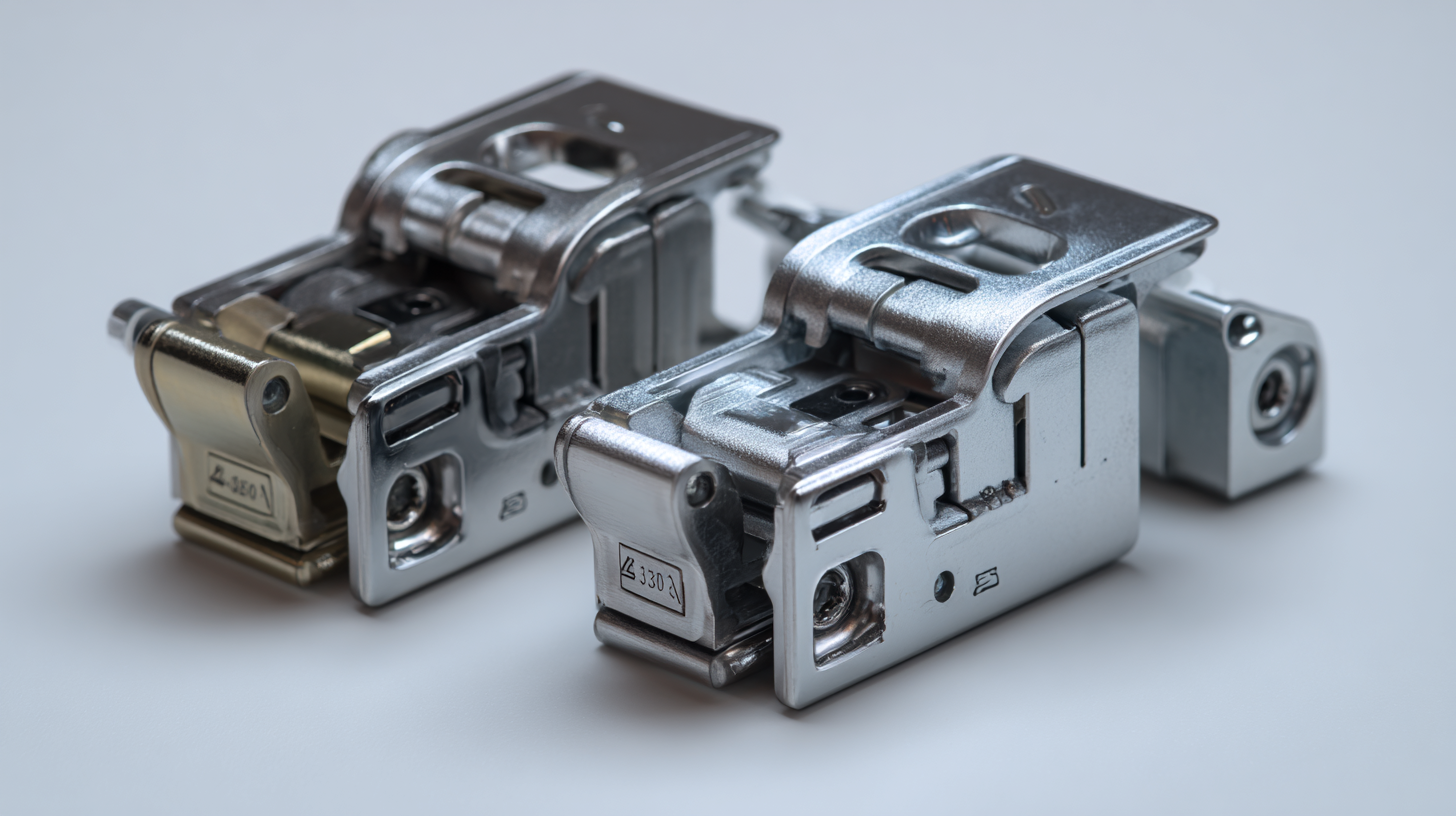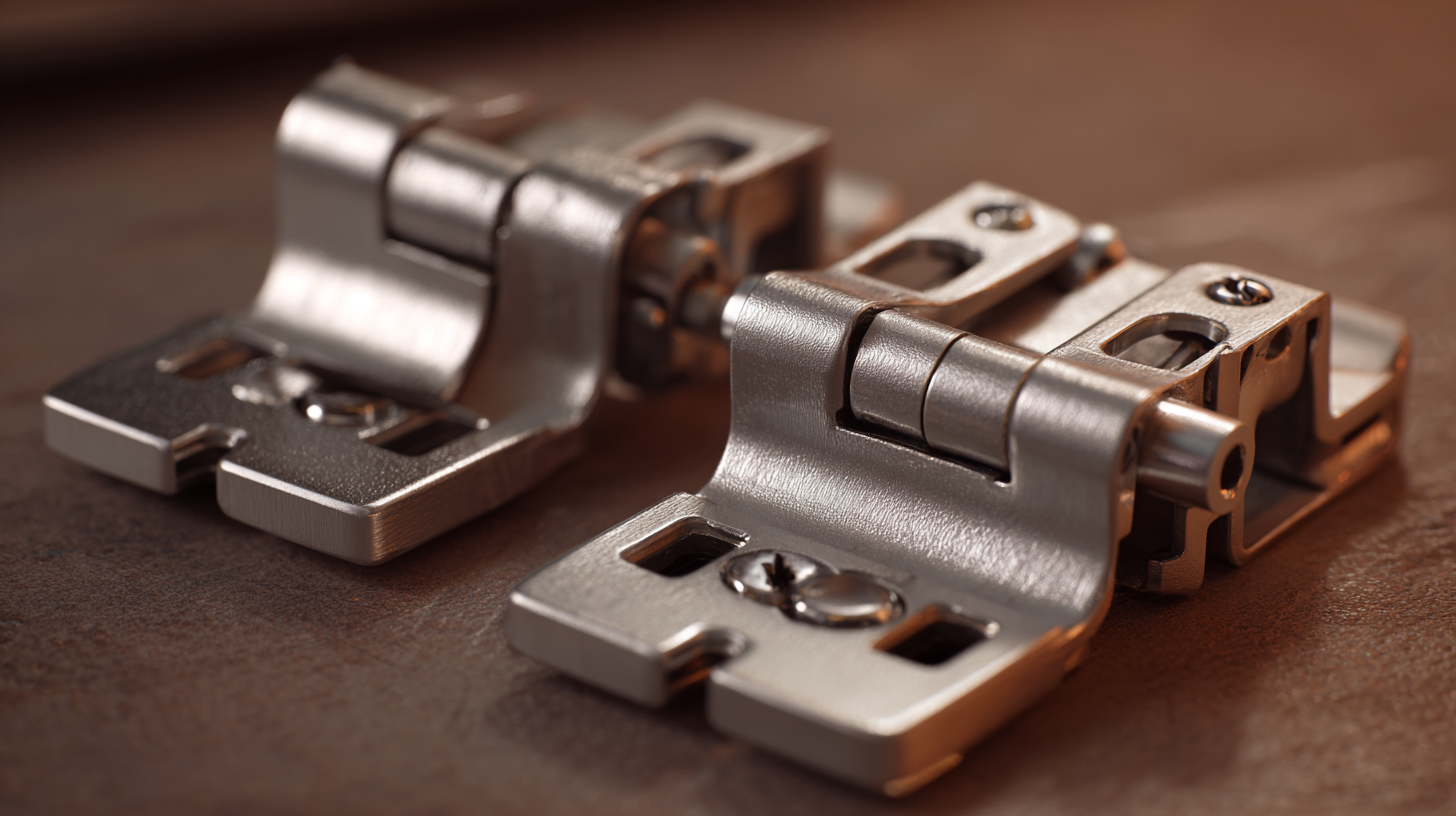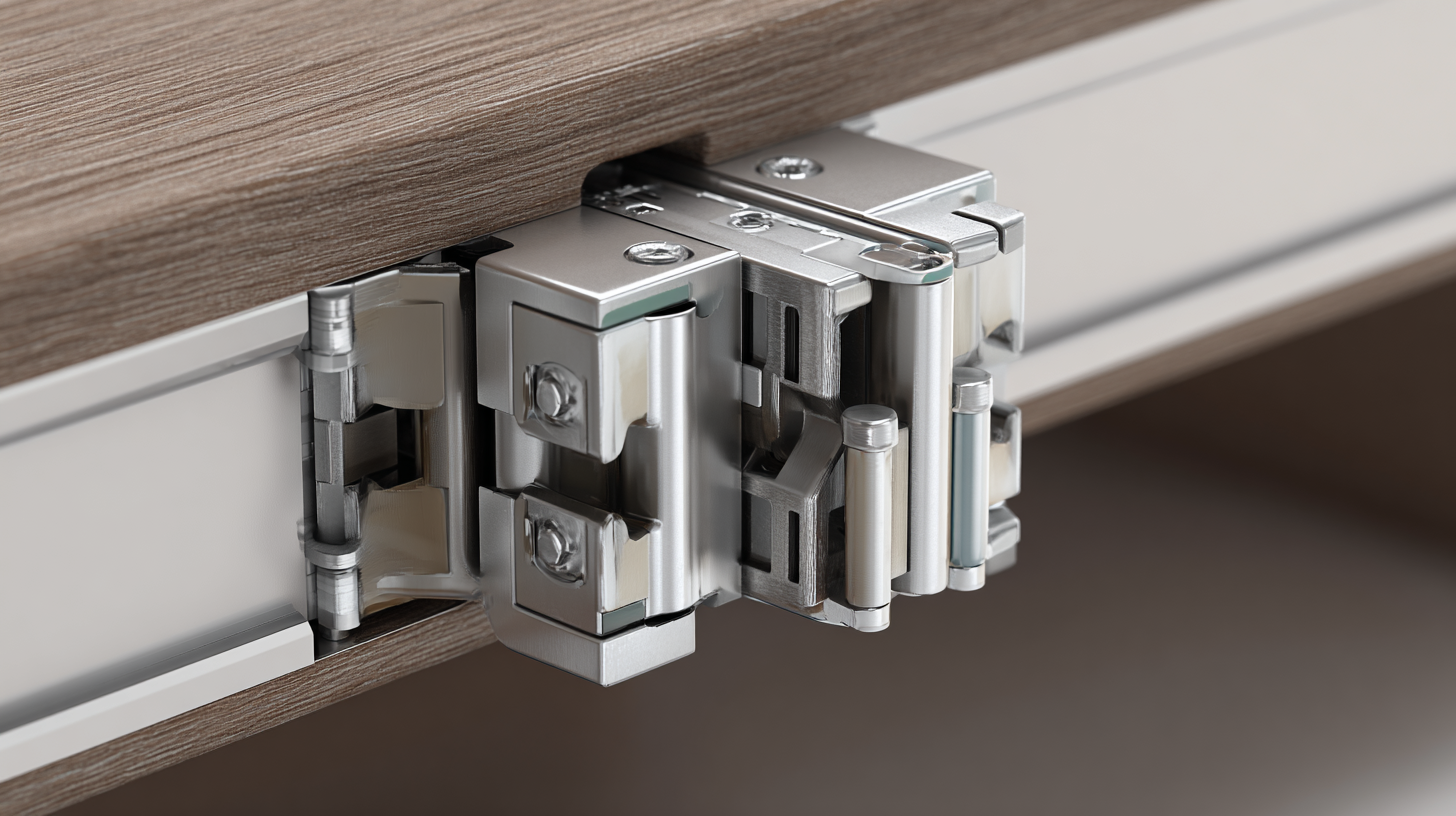Leave Your Message
In the realm of modern manufacturing, innovations are crucial for enhancing product functionality and user experience. One game-changing development has been the introduction of 3D Hinges Soft Closing, which not only improves the aesthetic appeal of furniture and cabinetry but also significantly elevates their usability.
 These advanced hinges feature a unique closing mechanism that allows doors to close softly and quietly, mitigating the risk of damage or wear over time. The precision engineering behind 3D Hinges Soft Closing brings a new level of sophistication to product design, enabling manufacturers to cater to the growing consumer demand for quality and comfort in their living spaces. As we delve into the components and benefits of these remarkable hinges, it becomes clear why they are becoming a staple in contemporary manufacturing practices.
These advanced hinges feature a unique closing mechanism that allows doors to close softly and quietly, mitigating the risk of damage or wear over time. The precision engineering behind 3D Hinges Soft Closing brings a new level of sophistication to product design, enabling manufacturers to cater to the growing consumer demand for quality and comfort in their living spaces. As we delve into the components and benefits of these remarkable hinges, it becomes clear why they are becoming a staple in contemporary manufacturing practices.
The landscape of modern manufacturing is constantly evolving, and the development of 3D hinges is a prime example of how innovation is shaping the industry. As we look toward 2025, several trends stand out, particularly the integration of technology in hinge design that enhances functionality and user experience. The move towards soft-closing mechanisms in 3D hinges brings not only practicality but also improved safety and longevity, making them essential for contemporary designs.

The integration of soft closing mechanisms in manufacturing has emerged as a pivotal advancement, significantly enhancing efficiency. Soft closing hinges provide a controlled closing motion, minimizing the impact and noise associated with conventional hinges. According to recent industry reports, approximately 30% of manufacturing errors stem from mechanical failures during assembly or usage. By deploying soft closing technology, manufacturers can reduce wear and tear on components, subsequently extending product lifespans and diminishing the need for frequent replacements.
Moreover, the shift towards soft closing mechanisms aligns with the principles of intelligent manufacturing, emphasizing precision and data-driven decision-making. A theoretical analysis highlights that leveraging industrial big data can empower manufacturers to optimize their processes, leading to an estimated 20% improvement in operational efficiency. As factories increasingly adopt smart technologies, integrating soft closing systems can also facilitate seamless automation, thereby enhancing productivity.
The synergy between advanced soft closing hinges and data analytics in manufacturing not only bolsters operational resilience but also contributes to sustainable development in modern industry.
In the realm of modern manufacturing, the integration of soft closing hinges has significantly transformed product lifecycle management. Industry reports indicate that the adoption of these innovative hinges leads to a reduction in product return rates by up to 30%. This enhancement not only boosts customer satisfaction but also streamlines the manufacturing process, reducing costs associated with repairs and replacements. By minimizing wear and tear, soft closing hinges extend the lifespan of cabinetry and furniture products, thereby optimizing inventory turnover and reducing waste.
Furthermore, a recent study from the International Hardware Federation highlights that manufacturers implementing soft closing technology have noted a 25% improvement in production efficiency. This increase is attributed to the simplified assembly processes and decreased reliance on manual adjustments during installation. The agile response to market demands facilitated by soft closing hinges allows manufacturers to adapt to design trends more swiftly, reinforcing the competitive edge necessary in today’s fast-paced environment. Thus, the impact of soft closing hinges transcends mere functionality, marking a significant advancement in product lifecycle management practices within the industry.
| Attribute | Traditional Hinges | Soft Closing Hinges | Impact on Product Lifecycle |
|---|---|---|---|
| Noise Level | High | Low | Reduced noise pollution enhances user experience |
| User Experience | Average | Superior | Increased satisfaction leads to higher sales |
| Installation Time | Moderate | Similar | Efficient design reduces potential manufacturing delays |
| Durability | Moderate | High | Longer lifespan reduces replacement costs |
| Cost | Lower | Higher | Higher initial investment but potential for long-term savings |
As the manufacturing industry pivots towards sustainable practices, the role of 3D printing and innovations such as soft-closing 3D hinges has become increasingly vital. According to industry experts, the 3D printing sector is projected to exceed $40 billion by 2030, illustrating a significant shift towards more efficient and eco-friendly manufacturing methods. This rapid growth reflects not only the economic potential of additive manufacturing but also its capacity to minimize waste and energy consumption through optimized design and production processes.

The future of 3D hinge technologies looks promising, particularly with the accelerated advancements in materials such as titanium. As reported, the integration of titanium into 3D printing processes is set to redefine manufacturing capabilities, unlocking a market potential projected to reach hundreds of billions in the coming years. The ability to produce lightweight yet durable components through additive manufacturing is revolutionizing how hinges are designed and utilized across various industries, from automotive to electronics.
In addition to material innovation, the standardization of production methods is crucial for the widespread adoption of 3D hinges. Current estimates suggest that while the market for 3D printing is rapidly expanding, standardized production techniques remain a significant barrier to entry. By addressing these challenges, manufacturers can streamline processes and enhance scalability. A recent industry report highlighted a projected compound annual growth rate (CAGR) of over 20% for the additive manufacturing sector, underscoring the urgency for advancements in 3D hinge technologies. This trajectory indicates that the next five years will likely bring substantial breakthroughs, positioning 3D hinges not only as essential components but also as pivotal elements in the modern manufacturing landscape.
This bar chart illustrates the predicted market growth of 3D hinge technologies over the next five years, indicating a significant increase in market value as manufacturers adopt these innovative soft-closing solutions.
